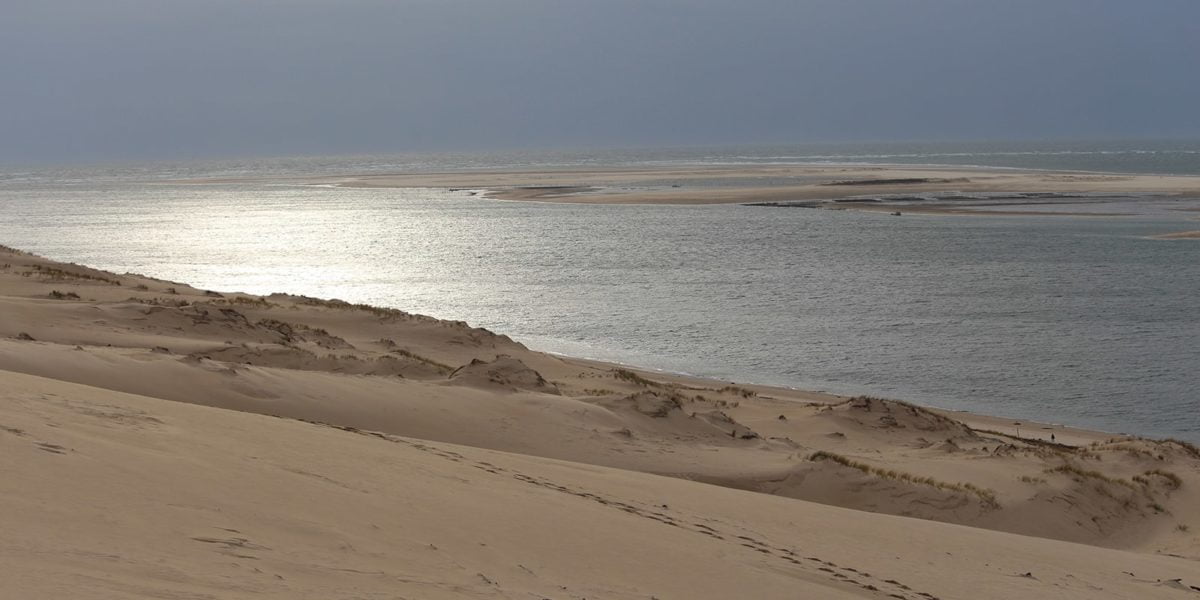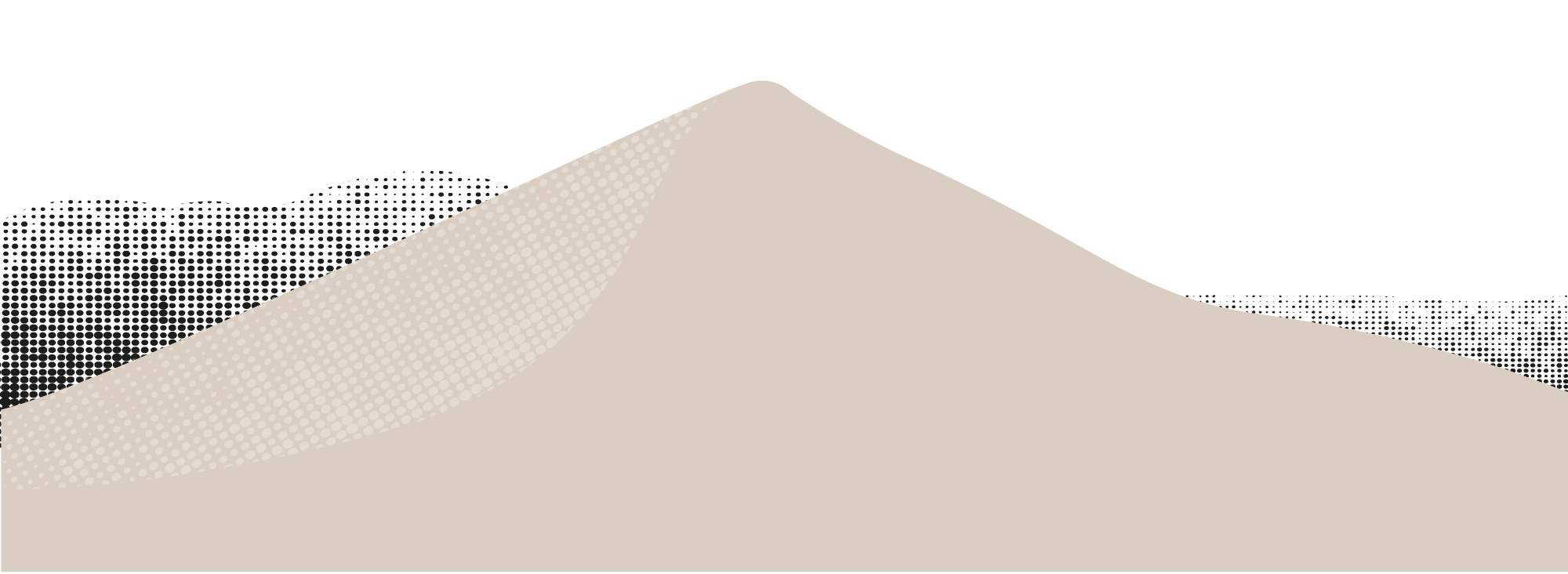Facing the dune : 5000 km of ocean
After an ascent by sand or stairs, you are there: a invigorating landscape is offered to you. As far as the eye can see, the ocean, which, with the tides, reveals the sands of the Banc d'Arguin and the Banc du Toulinguet, the passes of the Arcachon Bay, the long sand spit of the Cap peninsula -Aglet. Further on, we can see the Bassin lagoon.
For almost 10,000 years, the wind and the currents draw the landscapes of the Arcachon Basin, instilling constant movement. Born from the meeting between the fresh waters of the Eyre and the salt waters of the Atlantic, the Arcachon Basin lagoon communicates with the ocean through the passes. At each tide, 200 to 400 million m3 water enters and exits through these natural channels. Opposite the Dune are the tip of Cap Ferret and its lookout lighthouse.
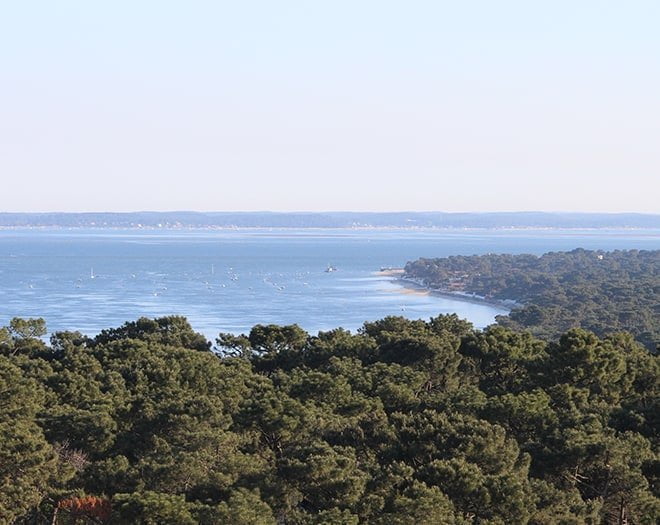
The Banc d'Arguin National Nature Reserve
Topped by the imposing Dune du Pilat, the Nature Reserve benefits from an exceptional landscape setting. The Banc d'Arguin National Nature Reserve encompasses all the sandy islets which form at the entrance to the Arcachon Basin, between the tip of Cap Ferret and the continent, as well as the maritime part included around these islets.
The Banc d'Arguin National Nature Reserve is located on one of the eight major migratory corridors on the planet, called the “East-Atlantic route” and which connects the African continent to the circumpolar regions of Europe and Russia. It is home to a multitude of birds.
Reserve is a recognized site of international importance for the preservation of our natural heritage. It's a sensitive and fragile environment. This Nature Reserve is home to protected animal and plant species in France and around the world, some of which are seriously threatened.
To participate in the preservation of this natural space, respect the regulation.
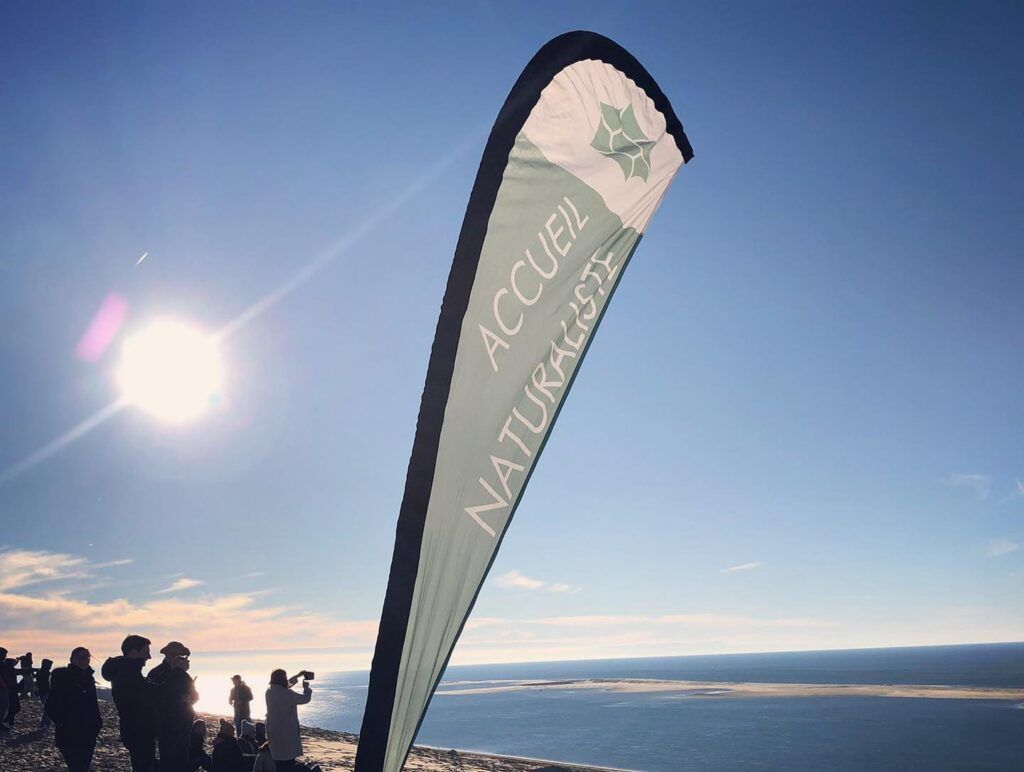
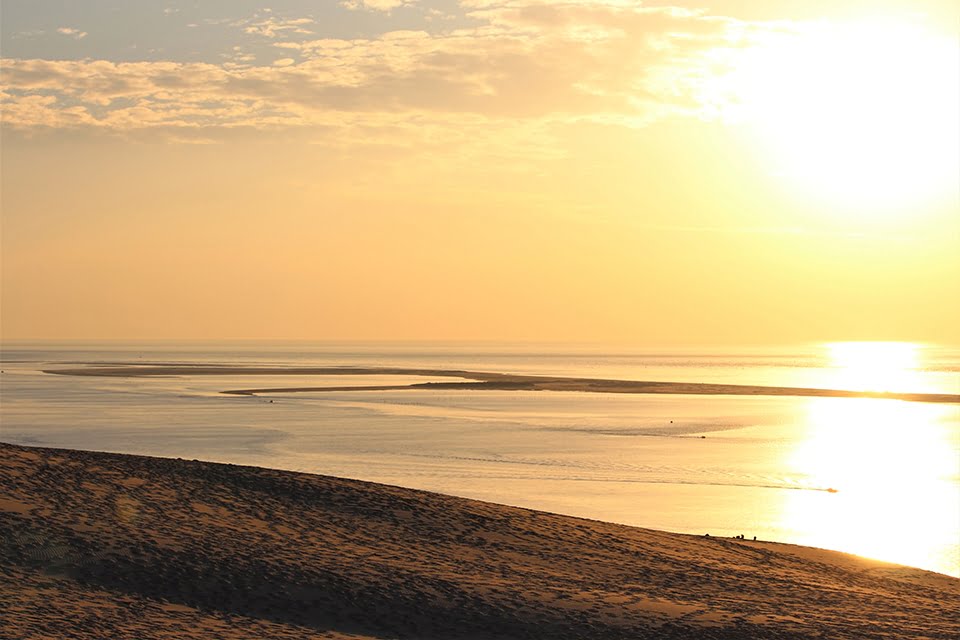
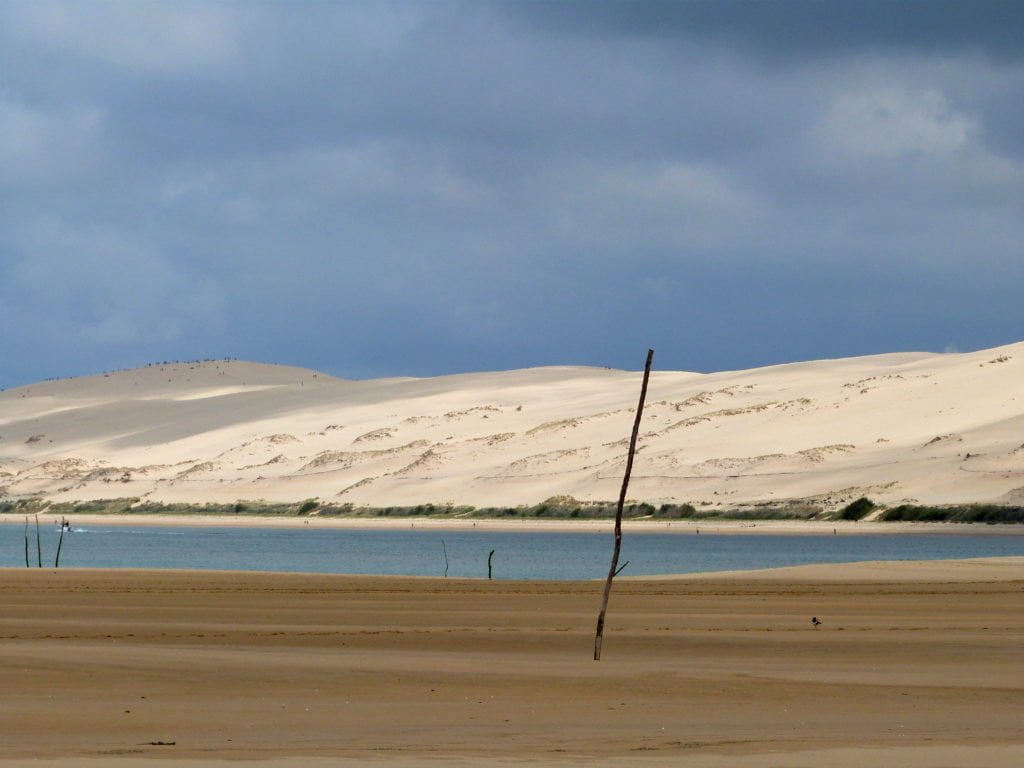

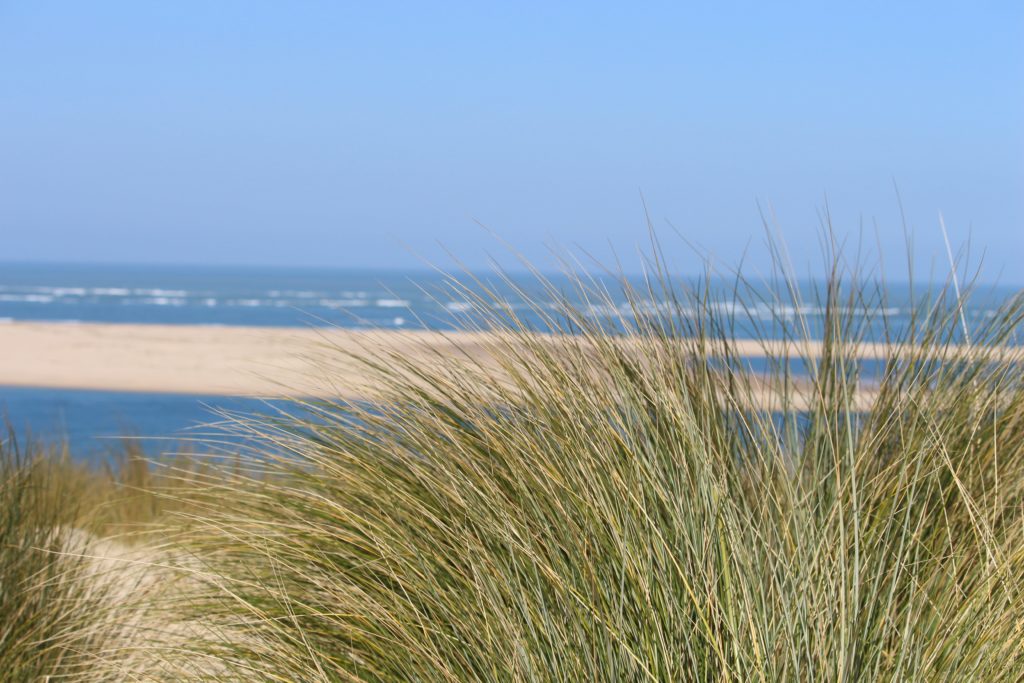
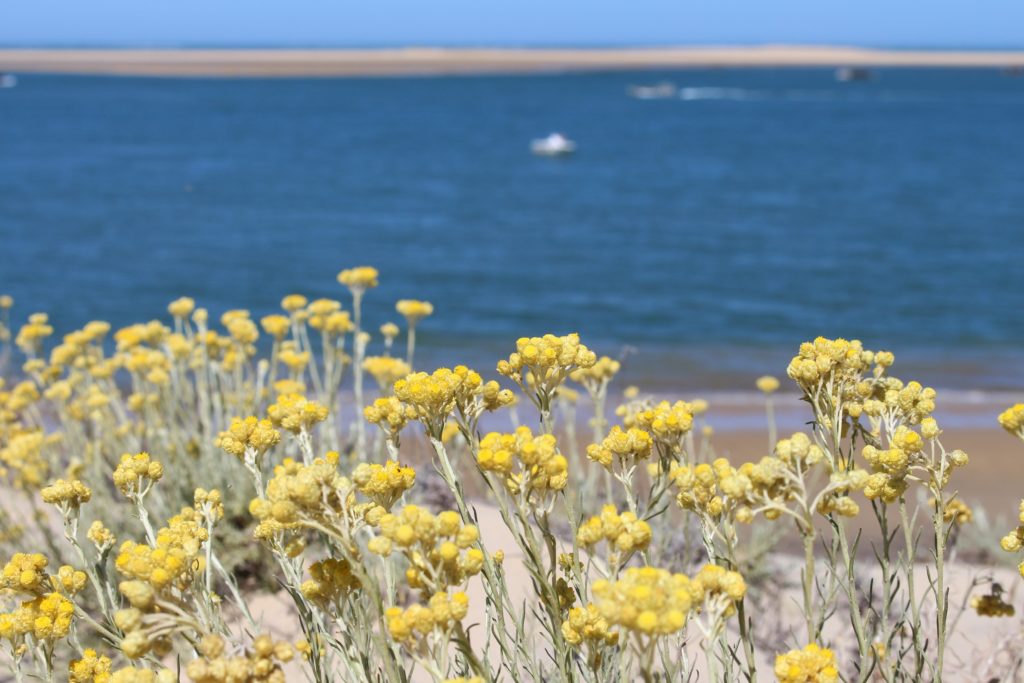
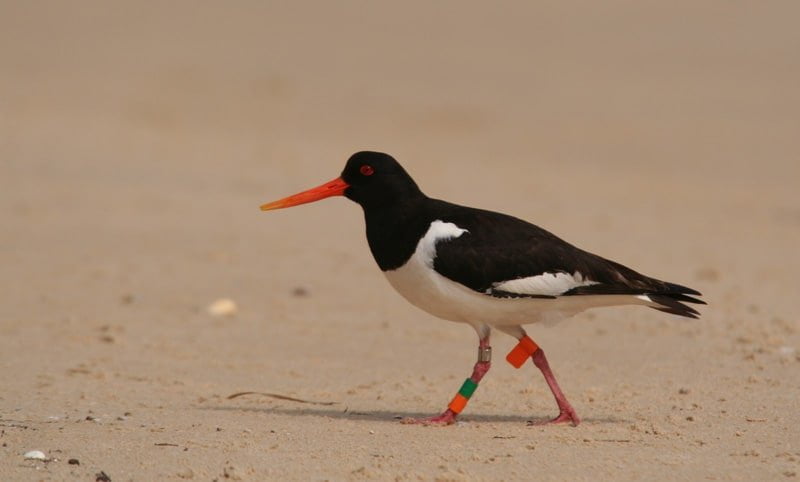
Access is strictly prohibited inside areas marked by specific marking: stakes, rope, signs or buoys.
The Reserve is managed on behalf of the State, by SEPANSO. To discover this natural environment, nature activities are organized by the rangers.
Witnesses to the evolution of the site
Cap Ferret lighthouse
The Cap Ferret lighthouse is a major element of the landscape of the peninsula. It signals the entrance to the Arcachon Basin from the ocean and contributes to maritime security.
Beyond its technical functions it is also a architectural monument which attracts many visitors each year intrigued by what it symbolizes and what it offers: a panorama of land and water at an altitude of more than 57 meters.
Listed as a historic monument since 2009, the Cap Ferret lighthouse is recognized for its heritage value.
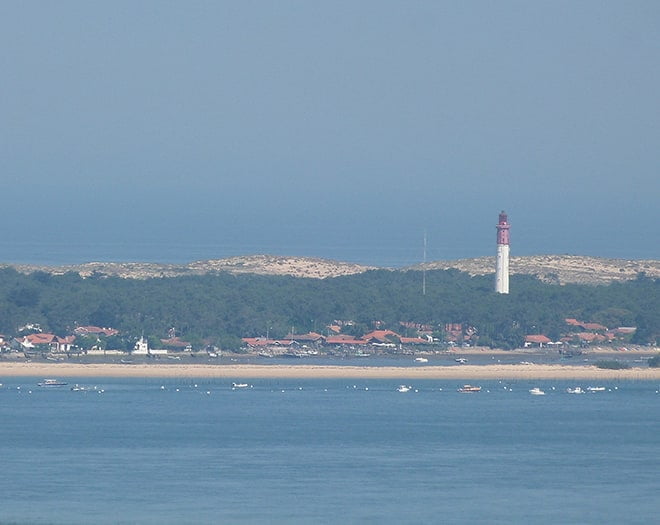
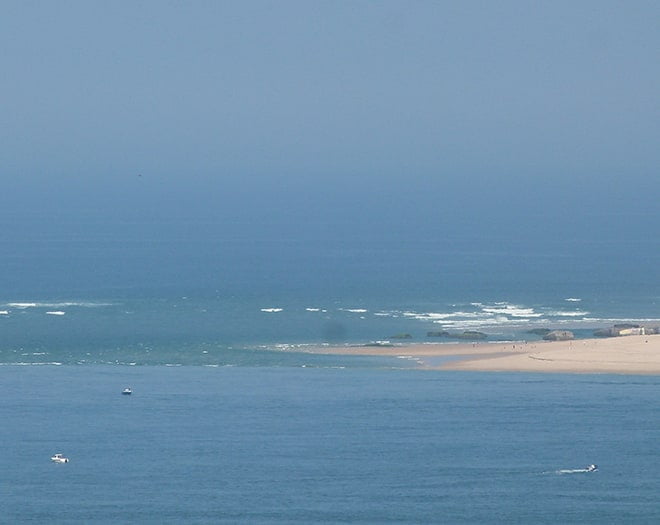
Blockhouses
The blockhouses (or bunkers) were built by the German army during the Second World War. Originally built at the top of the coastal dune, they are today submerged or lying on the beaches. The measurement of their movements testifies to the importance and speed of coast retreat subject to theerosion by waves, swell and wind.
Around this round mirror of water, the Bassin d'Arcachon, a sinuous cirque profiles its edges of pines and sand, swollen with dunes, some wooded with a bronze green, others wildly bare, with crests of dunes. 'silver rose, desert color.
Everywhere an ocean of silence and solitude. The small fishing villages look like flocks of sea birds perched on the beach (Jean Balde)1.
1 Jean Balde (1885-1938) - Bordeaux writer








